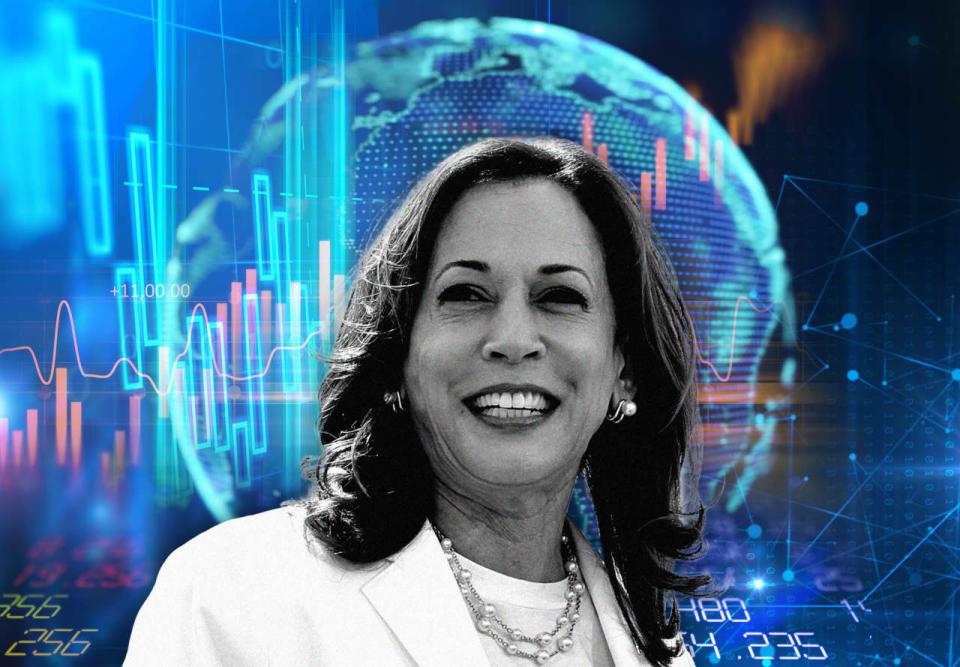
The unwinding of several “Trump trades” grabbed investors’ attention early Wednesday. But by the time Wall Street closed, a fledgling “Harris trade” had also started to take shape.
Bitcoin prices BTCUSD tumbled, while shares of Trump-sensitive stocks like Trump Media & Technology Group Corp. DJT and private-prisons company Geo Group Inc. GEO fell, as investors reacted to the higher perceived odds of a Kamala Harris victory in November’s presidential election by dumping shares expected to benefit from a second Donald Trump administration.
Most Read from MarketWatch
See: The market has pronounced a winner from Tuesday’s debate, and it’s Kamala Harris
Around the same time, shares of long-suffering solar-energy companies started to perk up. They ultimately finished Wednesday’s session sharply higher, booking their biggest daily gains since May, according to Dow Jones Market Data.
And market strategists said that if Vice President Harris, the Democratic nominee, maintains her lead over Republican rival Trump, it could help push them higher still.
ETFs in the space — including the Invesco Solar ETF TAN and the iShares Global Clean Energy ETF ICLN — saw notable gains on Wednesday. Shares of First Solar Inc. FSLR were a standout, rising more than 15%, FactSet data showed.
“There were clearly signs of a Harris trade,” said Jay Hatfield, portfolio manager at Infrastructure Capital Management, during an interview with MarketWatch on Wednesday. “Solar was ripping, [while] financials and energy were weak.”
Hatfield characterized solar stocks as “the leading bellwether” of the Harris trade. Ross Mayfield, an investment strategist at Baird, characterized solar as “one of the cleanest ways to evaluate that bet.”
To be sure, clean-energy stocks haven’t always benefited from a Democratic administration; they have been mired in a long bear market for much of President Joe Biden’s term. Previously, they had outperformed when former President Trump was in the White House.
Still, the fact that solar stocks rallied on Wednesday isn’t surprising: Democrats have expressed support for encouraging the expansion of clean energy, including solar. And given that the industry hasn’t quite found its economic footing, government subsidies remain essential for these companies to thrive, Mayfield noted.
Speaking more broadly, Hatfield said that the market was “a little destabilized by the prospect of a Harris win” early on. But investors quickly looked past politics and seized on another reason to sell when the August consumer-price index showed that prices of core goods and services, most notably shelter, rose quicker than economists had expected last month.
Yet comments from Nvidia Corp. NVDA Chief Executive Jensen Huang helped turn things around, as did a sense that markets had initially overreacted to the inflation data, Mayfield said.
“It was an initial overreaction,” he said. “It’s not going to change the Fed’s calculus.”
Markets may have also benefited from investors realizing that betting markets were still pointing to what has historically been the best outcome for markets: a divided U.S. government.
Stocks have seen better performance when control in Washington is split between the two parties, according to data furnished by Sam Stovall, chief investment strategist at CFRA. (Stovall, however, caveated this by adding that the sample size is too small to be statistically significant.)
U.S. stocks saw their biggest intraday comeback in more than a year on Wednesday, with the Nasdaq Composite COMP posting its biggest intraday turnaround since March 15, 2023, while the S&P 500 SPX and Dow Jones Industrial Average DJIA saw their biggest reversals since Oct. 13, 2022, Dow Jones Market Data showed.
Most Read from MarketWatch
Source: finance.yahoo.com
